

Internationally experienced Business Transformation and Operational Excellence Executive with engagements in Latin America, Europe, Middle East and Africa. Areas of expertise involve Operational Excellence, Lean Six Sigma, Lean Management, Change Management, Company Project Portfolio, and Hoshin Kanri. Significant experience in Operational Excellence program design and deployment, offering training and coaching to all levels of the organization.
Examples of previous deliverables include:
- Turnaround of P&C insurance (Portugal): over €14m improvement in earnings (in 12 months) via operational restructuring, customer and distributor base revision and product pricing reviews.
- Lean Management deployment (Mexico, Spain, Italy): over €19m efficiency improvement; 90% positive Employee perception for the program; +20pts improvement in Employee Engagement KPIs.
- Design and deliver Operational Excellence training at Black Belt and Green Belt levels, as well as for Process Owners. Mentor Operational Excellence Leaders and Project Champions.
- Co-deployment of Hoshin Kanri for a multinational organization in Spain, Italy and Georgia.
- Create high performing inhouse OpEx functions focusing on technical knowledge, as well as leadership behaviours and team dynamics.
Successfully completed PhD in Management Science with the research focusing on the effects of Lean Six Sigma deployment on Organizational Learning and Knowledge Creation.
Available For: Consulting, Influencing, Speaking
Travels From: Slovenia, Ljubliana
Speaking Topics: Operational Excellence, Change management, Cultural Transformation
| Dr. Morphis Tsalikidis, PhD | Points |
|---|---|
| Academic | 5 |
| Author | 45 |
| Influencer | 138 |
| Speaker | 94 |
| Entrepreneur | 20 |
| Total | 302 |
Points based upon Thinkers360 patent-pending algorithm.
 Managing Change Through Lean Principles: Turning Resistance into Resilience
Managing Change Through Lean Principles: Turning Resistance into Resilience
Tags: Culture, Leadership, Transformation
 Preparing the Workforce for Operational Excellence in the Age of Industry 4.0
Preparing the Workforce for Operational Excellence in the Age of Industry 4.0
Tags: Change Management, Leadership, Transformation
 Operational Excellence: The Key to Delivering Superior Customer Experience Again and Again
Operational Excellence: The Key to Delivering Superior Customer Experience Again and Again
Tags: Customer Experience, Management, Transformation
 The Role of HR in Continuous Improvement Programs - #5 Develop the Communication Strategy and Messages
The Role of HR in Continuous Improvement Programs - #5 Develop the Communication Strategy and Messages
Tags: Change Management, Leadership, Management
 Operational Excellence Deployment - Cardinal Sin #7 – Focus on Tools Rather Than Business Results!
Operational Excellence Deployment - Cardinal Sin #7 – Focus on Tools Rather Than Business Results!
Tags: Change Management, Leadership, Management
 The Six Honest Men: Rediscovering Curiosity and Learning in Everyday Life
The Six Honest Men: Rediscovering Curiosity and Learning in Everyday Life
Tags: Change Management, Leadership, Management
 The Role of HR in Continuous Improvement Programs - #3 Facilitate the Identification of Opportunities to Reinvest Excess Capacity.
The Role of HR in Continuous Improvement Programs - #3 Facilitate the Identification of Opportunities to Reinvest Excess Capacity.
Tags: Change Management, Leadership, Management
 The Role of HR in Continuous Improvement Programs: Integrate the Values of Continuous Improvement into the DNA of the Company
The Role of HR in Continuous Improvement Programs: Integrate the Values of Continuous Improvement into the DNA of the Company
Tags: Change Management, Leadership, Management
 The Role of HR in Continuous Improvement programs - #1 Select the Right People
The Role of HR in Continuous Improvement programs - #1 Select the Right People
Tags: Change Management, Leadership, Management
 Operational Excellence Deployment - Cardinal Sin #8 – Poor Communication Approach!
Operational Excellence Deployment - Cardinal Sin #8 – Poor Communication Approach!
Tags: Change Management, Leadership, Management
 Operational Excellence Deployment - Cardinal Sin #6: Offer Little Training and Coaching Support!
Operational Excellence Deployment - Cardinal Sin #6: Offer Little Training and Coaching Support!
Tags: Change Management, Leadership, Management
 Operational Excellence Deployment - Cardinal Sin #5: Ignore Behaviours and Attitudes!
Operational Excellence Deployment - Cardinal Sin #5: Ignore Behaviours and Attitudes!
Tags: Change Management, Leadership, Management
 Operational Excellence Deployment - Cardinal Sin #4 – Staff the Program based on Availability!
Operational Excellence Deployment - Cardinal Sin #4 – Staff the Program based on Availability!
Tags: Change Management, Leadership, Management
 Operational Excellence Deployment - Cardinal Sin # 3: Be the Genie in the Bottle
Operational Excellence Deployment - Cardinal Sin # 3: Be the Genie in the Bottle
Tags: Change Management, Leadership, Management
 The Importance of Courage in Creating a Culture of Continuous Improvement
The Importance of Courage in Creating a Culture of Continuous Improvement
Tags: Change Management, Leadership, Management
 Operational Excellence Deployment - Cardinal Sin #2: No Links with Strategic Priorities & Objectives
Operational Excellence Deployment - Cardinal Sin #2: No Links with Strategic Priorities & Objectives
Tags: Change Management, Leadership, Transformation
 The Role of HR in Continuous Improvement Programs - #4 Develop and Coach Your Managers and Leaders
The Role of HR in Continuous Improvement Programs - #4 Develop and Coach Your Managers and Leaders
Tags: Change Management, Leadership, Management
 Operational Excellence Deployment - Cardinal Sin #1: Copy What Other Companies Do
Operational Excellence Deployment - Cardinal Sin #1: Copy What Other Companies Do
Tags: Change Management, Leadership, Management
 Do You Have a Leadership TEAM or Simply a Collection of Individuals in Leadership Positions?
Do You Have a Leadership TEAM or Simply a Collection of Individuals in Leadership Positions?
Tags: Change Management, Leadership, Management
 The Six Thinking Hats Technique: A Powerful Tool for Better Decision-Making
The Six Thinking Hats Technique: A Powerful Tool for Better Decision-Making
Tags: Change Management, Leadership, Management
 Comparing Training Delivery Methods: In-Person, Online, and Hybrid Approaches
Comparing Training Delivery Methods: In-Person, Online, and Hybrid Approaches
Tags: Change Management, Leadership, Management
 Understanding Cognitive Bias: What It Is, How It Affects Business Decisions, and the Role of Lean Six Sigma in Mitigation
Understanding Cognitive Bias: What It Is, How It Affects Business Decisions, and the Role of Lean Six Sigma in Mitigation
Tags: Change Management, Leadership, Management
 Hoshin Kanri: The Strategic Planning Framework for Continuous Improvement
Hoshin Kanri: The Strategic Planning Framework for Continuous Improvement
Tags: Change Management, Management, Transformation
 Overcoming Common Challenges in Lean Management Implementation
Overcoming Common Challenges in Lean Management Implementation
Tags: Change Management, Leadership, Transformation
 How Lean Management Transforms Organizational Culture and Employee Engagement
How Lean Management Transforms Organizational Culture and Employee Engagement
Tags: Change Management, Leadership, Management
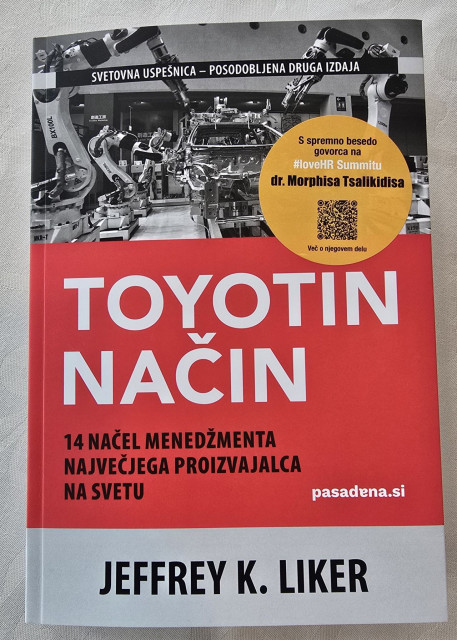 The Toyota Way, 2nd Edition: 14 Management Principles from the World's Greatest Manufacturer
The Toyota Way, 2nd Edition: 14 Management Principles from the World's Greatest Manufacturer
Tags: Leadership, Management, Transformation
Tags: Leadership, Management, Change Management
 Morphis Consulting
Morphis Consulting
Tags: Change Management, Management
 Align, Compete, Transform: A Holistic Lean Framework with Focus on Hoshin Kanri
Align, Compete, Transform: A Holistic Lean Framework with Focus on Hoshin Kanri
Tags: Leadership, Management, Transformation
 Procurement as a Competitive Advantage: How to Reduce Losses, Minimize Risks, and Maximize Value.
Procurement as a Competitive Advantage: How to Reduce Losses, Minimize Risks, and Maximize Value.
Tags: Digital Transformation, Management, Procurement
 CX and Operational Excellence: The Path to Superior Customer Experience and Business Success
CX and Operational Excellence: The Path to Superior Customer Experience and Business Success
Tags: Customer Experience, Customer Loyalty, Management
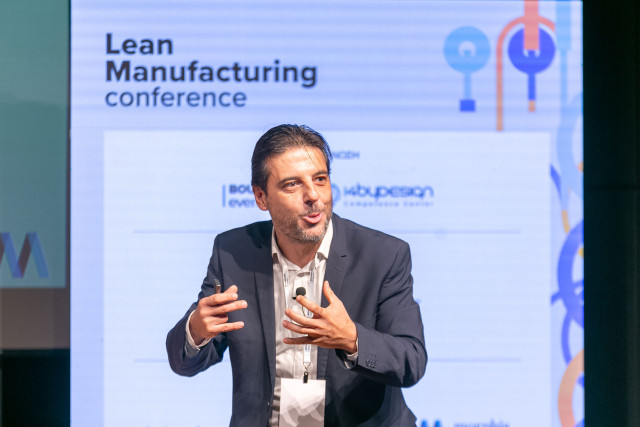 The 7 Cardinal Sins when Deploying Operational Excellence Programs
The 7 Cardinal Sins when Deploying Operational Excellence Programs
Tags: Change Management, Leadership, Management
 What companies can learn from briefing-debriefing sessions, as applied in the air force
What companies can learn from briefing-debriefing sessions, as applied in the air force
Tags: Culture, Leadership, Management
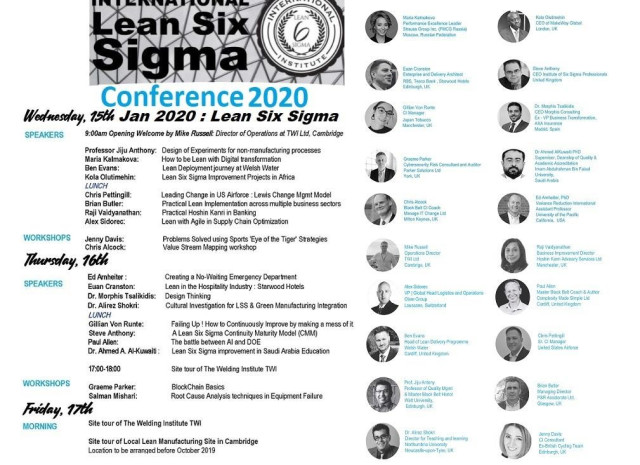 How OpEx programs can benefit from Design Thinking
How OpEx programs can benefit from Design Thinking
Tags: Design Thinking, Management
 Sharing failed projects and why they did not turn out successful
Sharing failed projects and why they did not turn out successful
Tags: Change Management, Leadership, Management
 The 7 Cardinal Sins twhen Deploying Operational Excellence Programs
The 7 Cardinal Sins twhen Deploying Operational Excellence Programs
Tags: Change Management, Leadership, Transformation
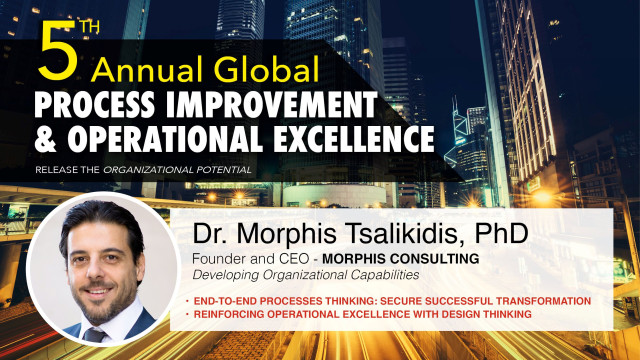 End-to-End Process Thinking: Secure Successful Transformation
End-to-End Process Thinking: Secure Successful Transformation
Tags: Culture, Leadership, Management
 Linking Design Thinking with Business Transformation and Operational Excellence
Linking Design Thinking with Business Transformation and Operational Excellence
Tags: Change Management, Design Thinking, Management
 Dealing with the challenges of large transformation programs
Dealing with the challenges of large transformation programs
Tags: Change Management, Leadership, Management
 Lessons Learnt: Lean Management Deployment in Europe and Latin America
Lessons Learnt: Lean Management Deployment in Europe and Latin America
Tags: Change Management, Leadership, Management
Tags: Change Management, Leadership, Management

Tags: Change Management, Management
 Why OpEx Transformation Fails to Deliver Organizational Learning
Why OpEx Transformation Fails to Deliver Organizational Learning
Tags: Change Management, Leadership, Management
 Operational Excellence - How to Effectively Change an Organization.
Operational Excellence - How to Effectively Change an Organization.
Tags: Change Management, Leadership, Management
 Operational Excellence and Design Thinking
Operational Excellence and Design Thinking
Tags: Design Thinking, Supply Chain, Sustainability
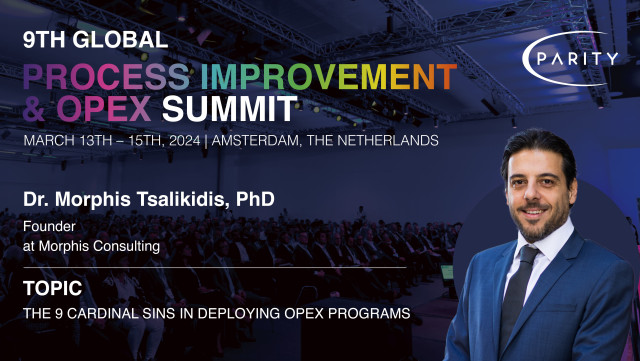 Th 9 Cardinal Sins when Deploying Operational Excellence Programs
Th 9 Cardinal Sins when Deploying Operational Excellence Programs
Tags: Change Management, Leadership, Management
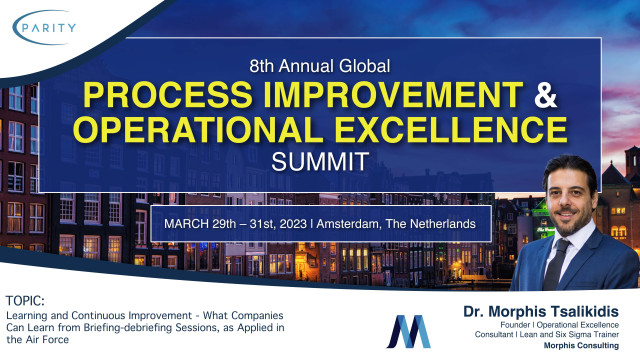 Learning and Continuous Improvement - What companies can learn from Briefing-Debriefing sessions, as applied in the Air Force
Learning and Continuous Improvement - What companies can learn from Briefing-Debriefing sessions, as applied in the Air Force
Tags: Culture, Leadership, Management
 Resilience in the Workplace in Today’s World
Resilience in the Workplace in Today’s World
In today’s fast-paced and ever-changing work environment, resilience has become a critical skill for both individuals and teams. Resilience is the ability to adapt to adversity, bounce back from setbacks, and continue moving forward despite challenges. It is not about avoiding stress or difficulty, but rather about facing these challenges head-on and emerging stronger from the experience. In the workplace, resilience is essential for maintaining productivity, fostering innovation, and ensuring long-term success.
Resilience is the capacity to recover quickly from difficulties and adapt to challenging circumstances. It involves maintaining a positive attitude, managing stress effectively, and finding solutions to problems, even in the face of adversity. Resilience is not an innate trait that some people have and others don’t; rather, it is a skill that can be developed and strengthened over time.
In personal life, resilience might look like recovering from a personal loss, such as the death of a loved one, and finding ways to move forward while still honoring their memory. In professional life, resilience could involve bouncing back from a failed project or a missed opportunity, learning from the experience, and applying those lessons to future endeavors.
For example, consider a professional who has just been passed over for a promotion they worked hard for. Instead of feeling defeated and demotivated, a resilient person would reflect on what they could improve, seek feedback, and continue to strive for excellence in their current role. This attitude not only helps them grow professionally but also demonstrates to their employers that they are capable of handling challenges and maintaining their commitment to the organization.
Developing resilience in the workplace is crucial for both individual and organizational success. The modern workplace is characterized by constant change, whether it’s due to technological advancements, economic fluctuations, or shifts in organizational priorities. In such an environment, resilience enables employees to navigate uncertainty, adapt to new circumstances, and maintain their performance even when faced with setbacks.
For organizations, fostering resilience among employees is key to building a robust workforce that can withstand and thrive in the face of challenges. Resilient teams are more likely to innovate, collaborate effectively, and maintain high levels of productivity, even during times of stress or change. Moreover, organizations that prioritize resilience are better equipped to retain top talent, as employees are more likely to stay with a company that supports their personal and professional growth.
Resilience manifests in various ways, and understanding the signs of good resilience can help individuals and organizations recognize and cultivate this important trait.
Conversely, poor resilience can be detrimental to both individual and organizational well-being. Here are some signs that someone may be struggling with resilience:
The good news is that resilience is a skill that can be developed and strengthened with practice. Here are some strategies to help build resilience:
Conclusion
Resilience is an invaluable skill in today’s dynamic and often unpredictable work environment. By developing resilience, individuals can better manage stress, adapt to change, and overcome obstacles, leading to personal and professional growth. Organizations that foster resilience within their teams benefit from improved productivity, innovation, and employee retention. While some people may naturally be more resilient than others, the good news is that resilience can be learned and strengthened through intentional practice and self-awareness. By focusing on building resilience, both individuals and organizations can thrive in the face of challenges and emerge stronger and more successful.
Tags: Coaching, Leadership, Management
 Understanding the Kübler-Ross Change Curve: Origins, Evolution, and Application
Understanding the Kübler-Ross Change Curve: Origins, Evolution, and Application
The Kübler-Ross Change Curve has its roots in the work of psychiatrist Elisabeth Kübler-Ross, who first introduced the concept in her 1969 book "On Death and Dying." Initially, the model was developed to describe the five stages of grief that terminally ill patients experience when facing their own mortality. These stages—Denial, Anger, Bargaining, Depression, and Acceptance—were intended to help individuals understand and cope with the emotional responses to loss and death.
Over time, the model was adapted beyond its original context to describe the emotional stages individuals experience during any significant change, not just in the face of death but in response to life-altering events such as job loss, divorce, or organizational change. This adaptation led to the model being widely recognized and utilized in the field of change management, where it is known as the Kübler-Ross Change Curve.
In the context of organizational change, the Kübler-Ross Change Curve is used to understand how people emotionally react to change, helping leaders and change managers anticipate and address the emotional responses of employees during transitions. The model has evolved to focus not just on individuals facing personal loss but on how teams and organizations can manage the collective emotional journey during times of transformation.
The stages of the Change Curve in the context of organizational change are as follows:
Denial: Employees may initially resist the change, unable or unwilling to believe that change is necessary or that it will affect them. This stage is marked by shock, avoidance, and a tendency to cling to the status quo.
Anger: As the reality of the change sets in, frustration and anger may emerge. Employees might express anger towards management, colleagues, or even themselves for the situation, blaming others for the change or its perceived negative impacts.
Bargaining: In this stage, employees may attempt to negotiate or bargain to delay or avoid the change. They might seek to make deals with management to minimize the impact or look for ways to revert to the old ways of working.
Depression: When bargaining fails and the change becomes inevitable, employees might experience feelings of sadness, fear, or helplessness. This stage can lead to decreased morale, productivity, and engagement as the full impact of the change is realized.
Acceptance: Finally, employees begin to accept the change, moving forward with the new reality. They start to see the potential benefits and begin to adapt, finding ways to work within the new system or structure.
Organizational Restructuring: When a company undergoes restructuring, employees often go through the stages of the Kübler-Ross Change Curve. Initially, they may deny that the restructuring will impact them, followed by anger when layoffs or changes in roles are announced. Bargaining might involve employees attempting to secure their positions, while depression sets in as the full impact of the restructuring becomes clear. Acceptance occurs as employees adjust to their new roles and the new organizational structure.
Technology Implementation: Implementing a new technology system can trigger the Kübler-Ross stages. Employees might initially deny the need for a new system, become frustrated with the learning curve or the disruption to their routines, and then bargain for more training or additional resources. Over time, they may experience frustration or helplessness (depression) as they struggle with the new system before finally accepting and mastering it.
Mergers and Acquisitions: During mergers or acquisitions, employees often experience the full spectrum of emotions described by the Change Curve. The uncertainty and disruption caused by such changes can lead to significant emotional responses, making it essential for leaders to recognize and address these reactions.
While the Kübler-Ross Change Curve is a valuable tool, its application in change management presents several challenges:
Linear Assumption: The model suggests that individuals move through the stages sequentially, but in reality, people may experience these stages out of order, or even cycle back through stages multiple times. This non-linear progression can make it difficult for change leaders to predict and manage employee responses.
Individual Differences: Not everyone will experience all five stages, or they may experience them with varying intensity. Factors such as personality, past experiences, and the perceived impact of the change can all influence how an individual reacts.
Oversimplification: The Change Curve is a simplified model that doesn’t account for the full complexity of human emotions and behavior during change. It’s important for leaders to recognize that other factors, such as organizational culture, external pressures, and the support systems in place, also play significant roles.
Risk of Misuse: There’s a risk that the model could be used prescriptively, with leaders expecting employees to move through the stages on a set timeline. This can lead to frustration and a lack of empathy if employees don’t progress as expected.
Empathy and Communication: Leaders should approach change with empathy, understanding that employees may be experiencing significant emotional turmoil. Open, honest, and frequent communication is crucial to helping employees navigate the stages of the Change Curve.
Support Systems: Providing support throughout the change process is vital. This can include training, counseling, or simply creating spaces for employees to voice their concerns. Recognizing and addressing the emotional needs of employees can help them move through the stages more smoothly.
Flexibility: Recognize that not everyone will follow the Change Curve in the same way. Be prepared to offer individualized support and allow people to process change at their own pace.
Monitor and Adjust: Continuously monitor the emotional climate of the organization and be ready to adjust strategies as needed. If a significant number of employees are stuck in a particular stage, it may indicate a need for additional communication, support, or even a reevaluation of the change strategy.
Cultural Sensitivity: Consider the organizational culture and how it influences responses to change. In some cultures, for example, outward expressions of anger may be discouraged, leading to suppressed emotions that might not be immediately apparent but could manifest later in less visible ways.
The Kübler-Ross Change Curve offers valuable insights into the emotional journey that individuals and organizations undergo during significant change. By understanding the stages of the curve and recognizing the challenges in its application, leaders and change management professionals can better support their teams through transitions, ensuring a smoother and more successful change process. While the model is not without its limitations, its emphasis on the human side of change remains a crucial element in managing any organizational transformation.
Tags: Change Management, Leadership, Management
 Mastering Change Management: The Power of the D x V x FS > R
Mastering Change Management: The Power of the D x V x FS > R
In the previous article, we discussed the formula Q x A = E, which highlights the importance of balancing the quality of a solution with its acceptance by stakeholders to ensure effective change. Building on that foundation, in this article, we will explore another critical formula in change management:D x V x FS > R. Together, these two formulas offer a comprehensive framework for navigating the complexities of organizational change, addressing both the technical and human elements essential for success.
While Q x A = E emphasizes the need for a high-quality solution and strong acceptance to achieve effectiveness, the D x V x FS > R formula delves into the dynamics of driving change by overcoming resistance. These formulas complement each other by providing a holistic approach to change management. One ensures that the solution is both technically sound and supported by those affected, while the other focuses on the conditions necessary to initiate and sustain change, such as dissatisfaction with the status quo, a compelling vision for the future, and actionable first steps.
Understanding and applying these formulas is crucial for any leader or change agent aiming to guide their organization through successful transformations. By addressing both the need for high-quality solutions and the human factors that drive or inhibit change, these frameworks help ensure that change initiatives are not only implemented but embraced and sustained over the long term.
D x V x FS > R, also known as the "Change Formula," was initially conceived by David Gleicher and later refined by Kathie Dannemiller. This formula offers a powerful framework for understanding the key elements that need to be in place to overcome resistance and drive successful change.
Here’s what each component represents:
D (Dissatisfaction with the Status Quo): This is the level of dissatisfaction or discomfort that individuals or groups feel with the current situation. If people are unhappy or frustrated with the way things are, they are more likely to support change. Essentially, this element answers the question: Why is change necessary?
V (Vision for the Future): Vision refers to the clarity and appeal of the desired future state. It provides direction and motivation, helping people understand where they are going and why the change is important. This element answers the question: What does success look like?
FS (First Steps): First Steps are the actionable, initial moves that need to be taken to start moving toward the vision. These steps should be clear, achievable, and provide momentum for the change process. This element answers the question: How do we begin the change process?
R (Resistance to Change): Resistance represents the natural pushback or reluctance that people feel towards change. It can stem from fear, uncertainty, or satisfaction with the current state. Resistance is the barrier that must be overcome for the change to succeed.
The formula D x V x FS > R suggests that for change to be successful, the combined forces of dissatisfaction, vision, and first steps must be greater than the resistance to change. Let’s break down how this works:
High Dissatisfaction, Low Vision: Stagnation
Imagine an organization where employees are deeply dissatisfied with outdated processes that slow down their work. However, leadership has not articulated a clear vision for how things could be better. Despite the high dissatisfaction, the lack of a compelling vision means that people may not know what they’re working towards, leading to stagnation.
Clear Vision, No Action: Frustration
Consider a company where the leadership has a clear and inspiring vision for the future—perhaps a shift to a more agile and innovative culture. However, they haven’t provided clear first steps for how to achieve this vision. Employees might be on board with the change conceptually but feel frustrated by the lack of direction on how to begin, causing momentum to phase out.
Strong First Steps, No Dissatisfaction: Lack of Urgency
Think about an organization that has laid out the practical first steps for implementing a new technology system. However, the current system, though not perfect, is still functional, and there is no strong dissatisfaction driving the need for change. Without this dissatisfaction, there may be little urgency or motivation to move forward with the change.
One of the most critical aspects of the formula is the concept of resistance. Resistance can come from various sources: fear of the unknown, comfort with the current state, or a lack of trust in leadership. For change to succeed, it’s essential that the forces driving the change (dissatisfaction, vision, and first steps) outweigh this resistance.
Engage and Communicate: One effective way to reduce resistance is to engage with those affected by the change. Open communication about the reasons for change, the vision, and the steps involved can help alleviate fears and build trust.
Build a Strong Case for Change: Highlight the dissatisfaction with the current state to create a sense of urgency. When people see that staying the same is no longer viable, they are more likely to embrace change.
Provide Clear Guidance: Ensuring that there are well-defined first steps helps to reduce uncertainty and provides a clear path forward, making the change process more manageable and less intimidating.
The D x V x FS > R and Q x A = E formulas provide a powerful toolkit for leaders and change agents aiming to navigate the complexities of organizational change. While the latter ensures that the change initiative is both technically sound and supported by those affected, the former one focuses on creating the right conditions for change by addressing dissatisfaction, providing a clear vision, and outlining actionable steps, all while managing resistance.
In a world that change is constant, mastering these formulas can make the difference between success and failure. By ensuring that the forces driving change are greater than the resistance to it, and that the solution is both high-quality and widely accepted, organizations can achieve lasting and meaningful transformation.
Tags: Management, Leadership, Change Management
 Unlocking the Power of Effective Change: Understanding Q × A = E
Unlocking the Power of Effective Change: Understanding Q × A = E
The formula Q×A=E is a strategic tool that underscores the importance of both the technical and human elements in any change initiative. Here’s a breakdown of what each variable represents:
Q = Quality of the Solution: This component focuses on the technical merit of the change. It could involve the robustness of a new process or the efficiency of a system upgrade. In essence, it’s about how capable and well-designed the solution is delivering the desired outcomes.
A = Acceptance of the Solution: This variable captures the human dimension of change and it refers to how well the change is received by those affected (employees, stakeholders, or customers). It relates to factors like buy-in, commitment, and support. Even the most ingenious solution will fail if people resist it.
E = Effectiveness of the Solution: Effectiveness is the measure of success for the change initiative. It reflects how well the change achieves its intended goals, which is determined by both tha quality of the solution AND its level of acceptance.
To truly understand the power of this formula, it’s important to recognize the relationship between quality and acceptanc - two variables that are both equally important. Consider the following:
High Quality, Low Acceptance: A Recipe for Failure
Imagine an organization introduces a new software system designed to streamline operations. The system is highly sophisticated, leveraging cutting-edge technology to automate complex processes. On paper, it’s a brilliant solution. However, the employees who are supposed to use the system feel blindsided. They weren’t consulted during the development process and are anxious about how it might affect their roles. Despite the system’s high quality, its effectiveness suffers because the people who need to use it are not on board.
High Acceptance, Low Quality: A Missed Opportunity
Consider another scenario where the leadership team of a company decides to implement a new communication platform. The employees are enthusiastic about the change, having been fully engaged in the selection process and seeing the platform as a positive step forward. Acceptance is therefore high. However, the platform proves to have many technical flaws—it’s slow, unintuitive, and lacks critical features. In this case, the high acceptance is under ined by the low quality of the solution, leading again to poor effectiveness.
Balancing Quality and Acceptance: The Key to Success
To maximize effectiveness, organizations must strive for both high-quality solutions and high levels of acceptance. This means that during any change initiative, equal attention must be paid to ensuring that the solution is technically sound and that the people affected by the change are fully engaged and supportive.
Understanding the formula is just the first step; the real challenge lies in applying it. Here are some strategies that organizations can use to enhance both the quality of their solutions and the level of acceptance:
Involve Stakeholders Early and Often
One of the most effective ways to ensure high acceptance is to involve stakeholders early in the change process. This means engaging employees, customers, and other key players in discussions about the need for change, soliciting their input on potential solutions, and keeping them informed throughout the process. When people feel heard and valued, they are more likely to support the change.
Invest in Thorough Planning and Analysis
To ensure high quality, it’s crucial to invest time and resources in thorough planning and analysis. This includes conducting feasibility studies, assessing potential risks, and testing solutions on a small scale before full implementation. By taking a methodical approach, organizations can develop solutions that are not only innovative but also practical and reliable.
Communicate Clearly and Transparently
Communication is key to driving both quality and acceptance. Leaders should clearly articulate the vision behind the change, explain how the new solution will benefit the organization and its people, and address any concerns head-on. Transparency fosters trust, which is essential for achieving buy-in.
Provide Training and Support
Even the best solution will struggle to gain acceptance if people don’t know how to use it. Providing comprehensive training and ongoing support is vital for helping employees adapt to new systems, processes, or structures.
Monitor and Adjust
Finally, organizations should recognize that change is not a one-time event but an ongoing process. By monitoring the implementation of a solution and gathering feedback, leaders can identify issues early and make necessary adjustments. This iterative approach allows for continuous improvement in both the quality and acceptance of the solution, leading to greater overall effectiveness.
The Q×A=E formula serves as a powerful reminder that successful change requires a delicate balance between the technical and human elements of any initiative. By focusing not only on developing high-quality solutions but also on fostering acceptance among those impacted, organizations can maximize the effectiveness of their change efforts. In a world where change is constant, understanding and applying this formula can make the difference between success and failure.
Note: I do not know who should be credited for the Q x A = E formula. Unless mistaken, I came accross this concept when reading the book Making Six Sigma Last by George Eckes quite some years ago!
Tags: Management, Leadership, Change Management